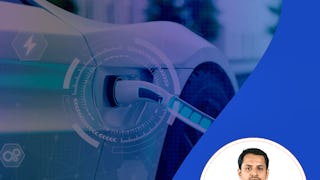The purpose of Electric Vehicles and Mobility is to help you, whatever your profile, your training or your country, find your own answers to questions such as:
- Will electric vehicles be the last to be allowed in megalopolises in the 21st century? - Does the environmental gain from vehicle electrification justify heavy investment in charging infrastructure? - Are electric vehicles only for wealthy people in developed countries? This course will allow you to acquire elements from engineering science, sociology, environmental science, political science, economics, management science, in order to evaluate, analyze and implement the diffusion of electric vehicles where their use is relevant. This MOOC is the English version of Mobilités et véhicules électriques; in the lecture videos, the teachers speak in French, nevertheless their presentation is in English and English subtitles are available. Groupe Renault and ParisTech schools have been working together for almost 15 years on topics related to sustainable mobility. Together, they created two Master programs (Transport and Sustainable Development in 2004, Mobility and Electric Vehicles in 2010) and the Sustainable Mobility Institute Renault-ParisTech in 2009, to support ongoing changes. Electric Vehicles and Mobility is the result of this shared history and was developed from a course delivered within the Master Mobility and Electric Vehicles, led by Arts et Métiers ParisTech in partnership with Ensta ParisTech, Mines ParisTech and École des Ponts ParisTech.



















